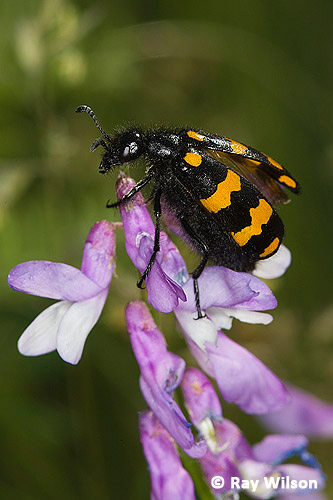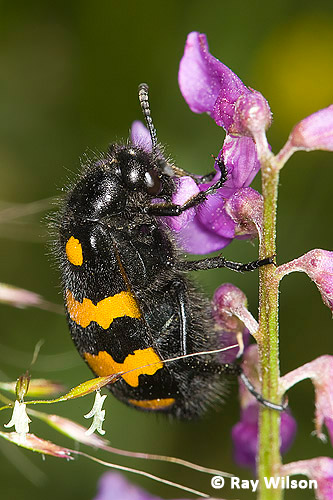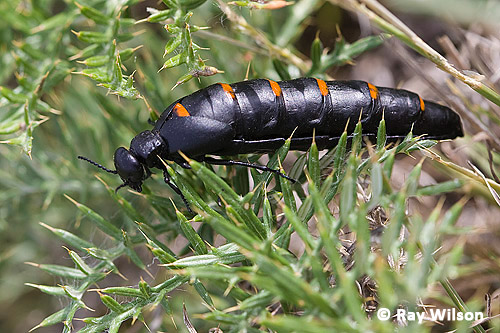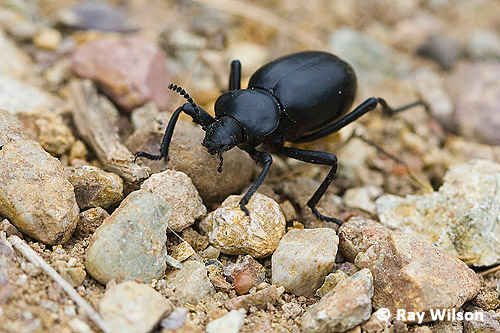

This group of beetles get their name from the oily secretions they release when threatened. In some species these secretions are highly caustic and can cause quite nasty skin blisters.

|

|
In China, the dried bodies of Mylabris species has been used as a medicine for the last 2000 years. Recently, extracts from the beetles have been found to have antitumour properties and to cause an increase in the number of leucocytes (white blood cells involved in immune responses) circulating in the blood.

Members of the Meloe genus have extremely complex life-cycles. In Europe, most species are larval parasites of solitary bees. After hatching from their eggs in the soil, the beetle larvae crawl into flowers and wait for a bee to visit and hitch a ride back to the bee's nest. Once ensconsed within the nest, the larvae initially prey on the bee's eggs but eating a few they progress to stealing the bee's stores of pollen and nectar. After several moults they finally pupate inside the nest. On emergence, the ungainly adults crawl from the nest and the cycle begins again.

Ray Wilson owns the copyright of all images on this site.
They may not be used or copied in any form without prior written permission.
raywilsonphotography@googlemail.com